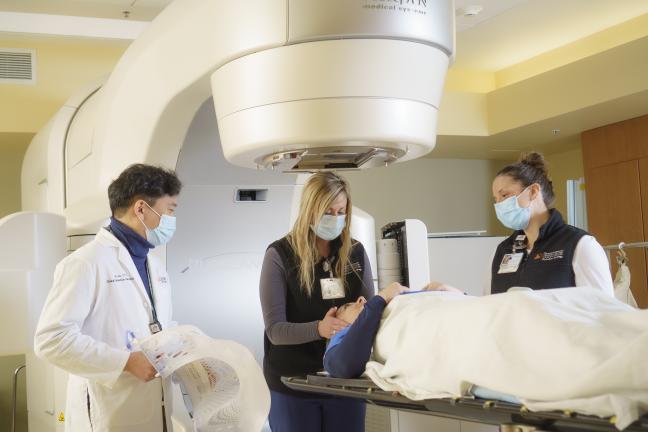What are stereotactic body radiation therapy and stereotactic radiosurgery?
We use stereotactic body radiation therapy (SBRT) to treat small tumors in your body with intense, precise beams of radiation. Stereotactic radiosurgery (SRS) targets your head, neck, and spine. These sophisticated treatments concentrate a very high dose of radiation at a small target. They are sometimes called stereotactic ablative radiotherapy. Most forms of external radiation therapy require dozens of short sessions with low-dose radiation beams that span several weeks. By contrast, SBRT and SRS require fewer than seven sessions. Sometimes, one or two sessions may be enough.
Despite their names, neither stereotactic radiosurgery nor stereotactic body radiation therapy require anesthesia or an incision. As a result, these approaches are less physically stressful than surgery. They are also generally better tolerated than conventional radiation therapy.
Why am I having SBRT or SRS?
SBRT and SRS have shown promising results in clinical trials with good control of cancer and fewer side effects than conventional therapies. We only use this super-high-dose approach on tumors smaller than a golf ball.
What type of technology do SBRT and SRS use?
SBRT and SRS use very high doses of radiation. For the radiation, itself, we use:
- 3-dimensional conformal radiation delivered by a Varian TrueBeam Linear Accelerator
- Intensity-modulated radiation therapy (IMRT) delivered with Varian's SmartBeam IMRT
- Magnetic resonance image-guided radiation therapy delivered with ViewRay’s MRIdian
All of these treatments are available at our Lebanon, New Hampshire location. Some are also available at our St. Johnsbury, Vermont location.
What conditions are treated using SBRT and SRS?
We use SBRT to treat:
- Bone metastases
- Early-stage lung cancer
- Some pancreatic tumors
We use SRS to treat:
- Acoustic neuromas
- Certain brain tumors
- Malformations of blood vessels deep in the brain
- Meningiomas
